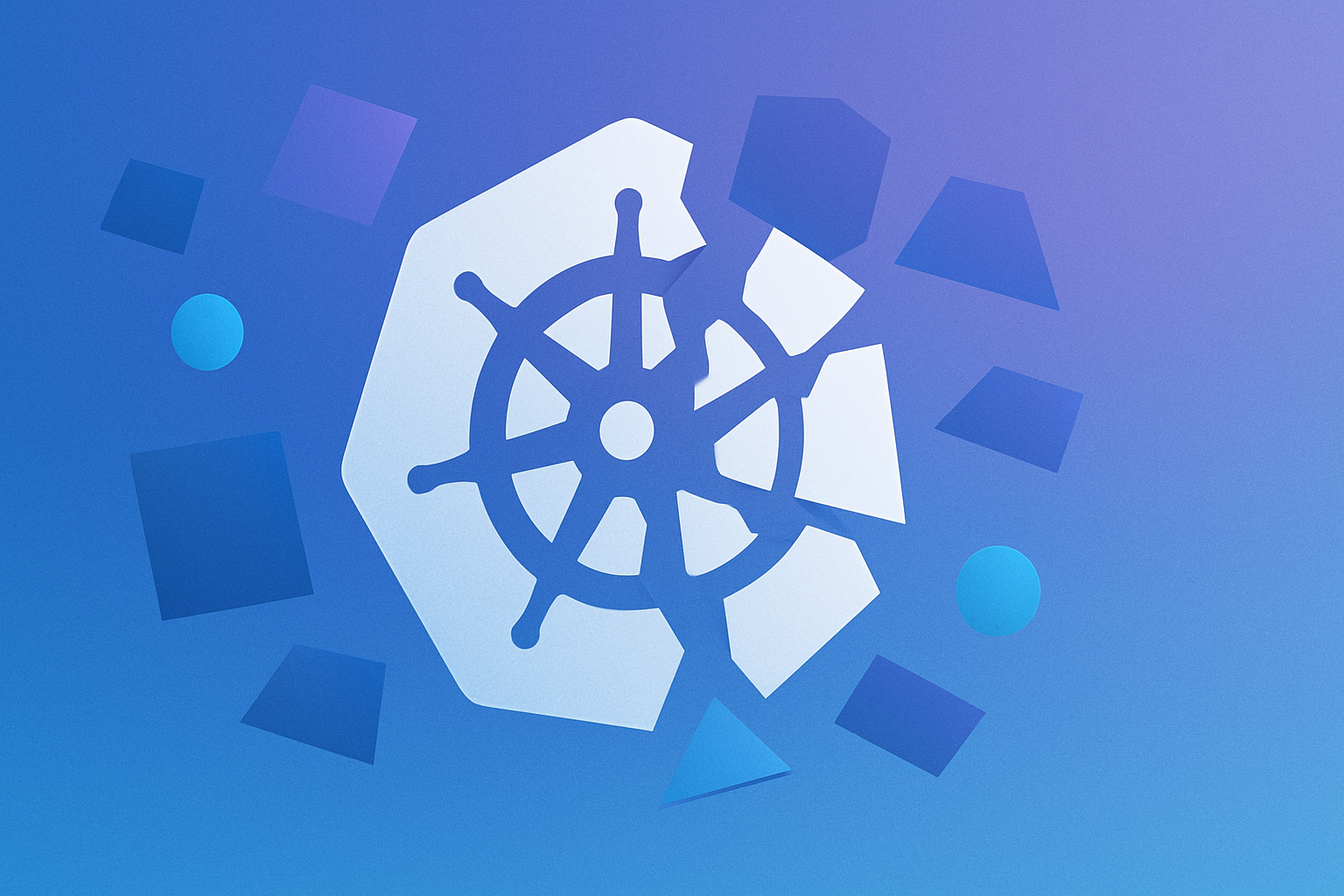Picture a world where building, managing, and sealing complex infrastructure is as straightforward as writing lines of code. Welcome to the domain of infrastructure as code (IaC), where the traditional landscape of infrastructure setup and maintenance gives rise to the efficiency and agility of software development principles.
In this post, we'll explain how IaC works and why it's important, and we'll cover the most widely used IaC tools in the market today. Hold tight as we explore how IaC is revolutionizing IT operations and empowering teams to automate infrastructure deployment, enforce consistency, and accelerate innovations like never before.

What Is Infrastructure as Code?
IaC empowers system administrators and IT practitioners to automate infrastructure provisioning, management, and deployment through the use of declarative or imperative code. They can define and manage infrastructure configurations using programming languages or descriptive files. With IaC, organizations can scale, replicate, and manage their infrastructure efficiently while ensuring consistency and repeatability across diverse environments.
Why Infrastructure as Code?
IaC revolutionizes infrastructure provisioning, management, and deployment, actively automating tasks through code. This approach empowers organizations to define and manage their infrastructure using programming languages. IaC comes with several benefits.
- Streamlined automation through infrastructure provisioning, configuration, and deployment processes reduces manual intervention and minimizes human error.
- Enhanced scalability through code-based configurations enables organizations to quickly scale infrastructure resources up or down to meet changing demands, thereby ensuring efficient resource utilization.
- Consistent configurations across environments promote standardization and reduce configuration drift.
- Collaboration is easier when infrastructure configurations are codified and teams can leverage version control systems on code repositories.
- Rapid provisioning of infrastructure resources accelerates deployment cycles, ensuring quicker time to market for applications and services.
Popular Infrastructure as Code Tools for 2024
As previously noted, IaC guarantees efficient management and provisioning of computing infrastructure through machine-readable definition files rather than relying on manual processes or interactive configuration tools. These files are typically written in languages such as YAML or JSON. They define the intended state of the infrastructure, including servers, networks, storage, and additional resources.
IaC tools interpret these files to automate the deployment, configuration, and management of infrastructure across different environments, such as cloud platforms, virtualization platforms, and on-premises data centers. Various IaC tools have been developed to aid in the automation processes.
Terraform
Terraform is an open-source IaC tool. It actively automates infrastructure provisioning and management. System administrators can define desired infrastructure states using declarative configuration files written in HashiCorp Configuration Language (HCL) or JSON. Terraform then generates an execution plan, executes changes by interacting with infrastructure APIs, and maintains a state file to track resources.
It best suits organizations requiring multi-cloud provisioning, scalable architectures, DevOps practices integration, immutable infrastructure, complex orchestration needs, lifecycle management, and compliance enforcement.
AWS CloudFormation
AWS CloudFormation actively automates the provisioning and management of AWS infrastructure resources as a native service. Users and system administrators actively define infrastructure configurations using JSON or YAML, specifying the desired state of resources such as EC2 instances, S3 buckets, and RDS databases. CloudFormation orchestrates the creation, updating, and deleting of resources based on these templates.
It works by interpreting the templates and using AWS APIs to enact the specified changes. This ensures consistent and reliable infrastructure deployments. CloudFormation best suits organizations seeking streamlined AWS resource management, IaC implementation, and automated environment replication and scaling.
Azure Resource Manager (ARM)
Azure Resource Manager, offered by Microsoft Azure, actively oversees and provisions Azure resources. System administrators can define infrastructure configurations using JSON templates. The templates detail the desired resources, including virtual machines, storage accounts, and networking components. ARM interprets these templates and interacts with Azure APIs to deploy, update, and delete resources accordingly.
It enables users to consistently and efficiently manage Azure resources, facilitating automated infrastructure deployments and ensuring consistent configurations across environments. ARM best suits organizations leveraging Microsoft Azure for cloud computing, requiring automated resource provisioning and implementing IaC practices for scalable and repeatable deployments.
Google Cloud Deployment Manager (CDM)
Google Cloud Deployment Manager manages and orchestrates the provision of Google Cloud Platform (GCP) resources. Users and system administrators define the infrastructure configurations using YAML or Jinja templates. They specify the desired state of resources such as virtual machines, cloud storage buckets, and networking components. CDM interprets these templates and interacts with GCP templates to deploy, update, and delete resources accordingly.
It facilitates streamlined management of GCP resources, thereby allowing users to automate infrastructure deployments and maintain consistency across environments. CDM best suits organizations using Google Cloud Platform for cloud services, seeking automated resource provisioning, and implementing IaC practices for efficient and scalable deployments.
Ansible
Ansible is an open-source tool that handles configuration management, application deployment, and task automation. It connects to remote hosts via SSH or Windows Remote Management (WinRM) and executes tasks defined in playbooks written in YAML format. Ansible playbooks define the desired state of systems, including configurations to be applied and tasks to be executed.
It then actively applies these configurations and tasks to the target systems, ensuring consistency across infrastructure. It's best suited for organizations requiring streamlined configuration management, application deployment automation, and infrastructure orchestration in both on-premises and cloud environments.
Pulumi
Pulumi is an IaC tool that empowers users to define and manage cloud infrastructure using programming languages like Python, JavaScript, TypeScript, and Go. Rather than relying on declarative configuration files, Pulumi grants users the ability to write infrastructure code using commonly known programming languages, offering the flexibility and robustness of genuine programming constructs.
Users define infrastructure resources and their configurations using Pulumi’s language-specific libraries. Pulumi subsequently converts this code into essential API calls to cloud providers, facilitating the provisioning and management of resources. It seamlessly integrates with leading cloud providers like AWS, Azure, and Google Cloud Platform.
Pulumi is ideal for organizations aiming for infrastructure automation with the versatility and expressiveness inherent in programming languages, seamlessly integrating IaC practices into their established development workflows.
Chef
Chef, an automation tool for configuration management and IaC, functions by defining infrastructure configurations through code written in its domain-specific language (DSL) or Ruby. Users can specify desired states for their system configurations, such as package installations, file configurations, and service management, within Chef recipes. These recipes are then applied to target systems using Chef clients, ensuring the systems converge to the desired state.
Chef integrates with cloud providers, virtualization platforms, and on-premises environments, enabling consistent and scalable infrastructure management. It's best suited for organizations requiring centralized configuration management, automated deployment of system configurations, and enforcement of infrastructure policies across diverse environments.
Vagrant
Vagrant is an open-source tool for creating and managing virtualized development environments. It works by utilizing configuration files, typically written in Ruby or YAML, to define the specification of a virtual machine (VM) or container. Users can specify operating systems, software packages, networking, and storage configurations. Vagrant then interacts with virtualization providers such as VirtualBox, VMware, or Docker to provision or manage the VM or container according to defined specifications.
It allows developers to easily replicate and share their development environments across teams, ensuring consistency and reproducibility in development workflows. Vagrant is best suited for situations where developers need isolated and reproducible development environments, such as software development, testing, and collaboration on projects with specific dependencies or configurations.

Wrapping Up
IaC is the foundation of contemporary IT operations, providing a revolutionary method for managing and provisioning infrastructure. By leveraging automation and code-driven practices, IaC empowers organizations to boost scalability, enhance efficiency, and accelerate innovation in unprecedented ways.
As we continue to embrace the principles of IaC, we embark on a journey toward a future where infrastructure deployment is as seamless as writing lines of code, paving the way for a more agile, reliable, and resilient digital landscape.
This post was written by Verah Ombui. Verah is a passionate technical content writer and a DevOps practitioner who believes in writing the best content on DevOps, and IT technologies and sharing it with the world. Her mission has always remained the same: learn new technologies by doing hands-on practice, deep-dive into them, and teach the world in the easiest possible way. She has good exposure to DevOps technologies such as Terraform, AWS Cloud, Microsoft Azure, Ansible, Kubernetes, Docker, Jenkins, Linux, etc.








